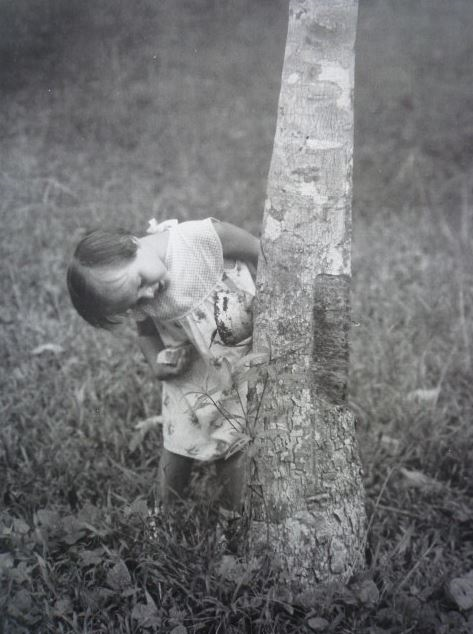Landscapes That Made Me
 |
| Illustration Barbara Grafton |
I am skilled with colour. I can hold a colour in my mind’s
eye and locate it on a paint chart; or see a colour and mix it precisely in
paint. The landscapes that formed my perception of the world, my preferences,
began with colour.
This is almost certainly a false memory, as I would have been well under two years old, but I recall staring up at intense blue skies and wisps of white clouds while lying swaddled in the Silver Cross pram that carried me and, in their turn, my three younger siblings. I can even remember the dark edge of the hood, and the broderie anglaise border on the blanket. My mother would park the pram outside in all seasons, so fledgling’s down, summer pollen, strands of airborne spider silk, and the last autumnal leaves and even feathery flakes of snow would drift across me.
Before I could crawl, I was drawn to the scent, colour and texture of grass and flower borders, to stone and moss, bark and brick. My landscape was a world in miniature, shining beetle armour, interlocking shafts of feathers, whorls of snail shells, and the shine in a bird’s eye. My father, a part-time wildlife artist, would bring home injured and dead birds, eggs and fungi. I studied these treasures, noticing how colours remained distinct or blended into one another and into tints, tones and shades.
With my siblings in tow, I spent hours in the park opposite the house, hiding in carefully constructed dens of greenery, lying under the cherry trees watching the fall of pink petals that coated me like confetti. When we were older, we walked miles to the Sports Centre and the Common, played Pooh Sticks in the streams, climbed trees that stained our clothes and careered through bleached grasses that scratched our shins. We mudlarked barefoot on the banks of the Itchen, a bus ride from home, and returned laden with pottery, bottle and bone shards, buckles, buttons, keys, and longed-for marbles, our legs itching from dried mud and insect bites.
I ran half wild through my childhood, giddy with the endless landscapes of air, earth and nature. In my adolescence, I haunted the old cemetery next to the Common, sketching the headstones and the Pre-Raphaelite angels that towered over them. I learnt from the graves and monuments two centuries of my city’s history: the Battle of Waterloo, Charge of the Light Brigade, Indian Mutiny, the Boer Wars and the ill-fated Titanic.
When we were older, our parents would take us into the soft, undemanding landscapes of Hampshire. To the New Forest, thousands of years old, with its dazzling foliage of ancient oaks, beech, yews, shafts of otherworldly light, round barrows and burnt mounds, endless tiny treasures of dragonflies, beetles, sundews, lichens, ferns and fungi. In the undulating Chalk Downs I imagined the bodies of sleeping giants, the rivers Test and Itchen running through them like veins. Those were views that would make me catch my breath: from Pilt Hill, Butser Hill, Beacon Hill, Farley Mount - even a Watership Down - across the multi-coloured patchwork of the lowlands to the unknown counties of Berkshire, Wiltshire, East Sussex and Surrey.
Then there were the cities, towns and villages: Southampton,
much of its historic architecture blasted by the Luftwaffe and replaced by mid-twentieth
century blandness; ancient Winchester with its gorgeous Gothic cathedral, pretty
Romsey and Selborne, and Beaulieu with its scattering of semi-feral ponies
grazing on the commons.
This is a taste of the landscape that made me. I could not wait to grow up and escape it, to explore as much as I could of the colour-filled landscapes that lay beyond.
Barbara Grafton



Comments
Post a Comment